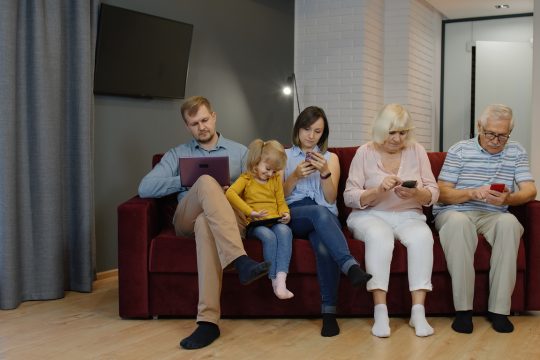
The age of pandemic lockdowns is pretty much behind us at this point, offering a time for examination of how our lives fared during those periods of isolation and removal from regular contact with the “outside world.” There were consequences, ranging from weight gain to interrupted sleep patterns, but arguably one of the most persistent changes in our lives has been the dramatic upswing in the amount of time all of us spent staring at screens–computer screens, smart phone screens, tablet computers, and television screens. After all, these devices did serve as a sort of lifeline to stay connected, whether through virtual office visits and online screen time with family and friends, or leaving the television on for most of the day just to stay “engaged.” Telehealth even brought us to the screen to chat with our healthcare providers. At times, there seemed to be no end to it.
This quote from Medical News Today, describing Italy’s total lockdown in 2020, provides summary context to what has come to be known as pandemic-driven screen addiction: “The COVID-19 lockdowns saw a dramatic increase in the use of the internet and electronic devices. This was related to multiple factors, such as the increased use of video calls replacing in-person meetings and an increase in the number of people working from home. The researchers note that this increase was likely because people were trying to compensate for limited social interaction and fill up new free time.”
And the addiction doesn’t discriminate. From school-age children needing to cope with the online learning world forced on them to isolated adults dealing with their increased vulnerability to COVID-19, turning to the screen became a necessity, a reflex, and in many cases, a pure habit. Studies have been done on this very subject and through the auspices of our friends at UK-based price comparison website Compare the Market, we’re sharing one that takes a fairly deep dive into the subject. Their resource titled “Understanding Screen Addiction and Responsible Digital Use” guide offers lots of valuable information, including:
- How technology use has changed over the years (72% of adults now consider smartphones their most essential device)
- The impact of COVID-19 on screen time use and digital behaviors
- Understanding screen addictions and how our devices affect our brains and change our behaviors (e.g. dopamine-driven reward loops)
- Helpful tips and useful advice for tackling device addiction, managing gadget and internet use, and creating healthier digital habits.
Notice: The links provided above connect readers to the full content of the posted articles. The URLs (internet addresses) for these links are valid on the posted date; socialsecurityreport.org cannot guarantee the duration of the links’ validity. Also, the opinions expressed in these postings are the viewpoints of the original source and are not explicitly endorsed by the AMAC Foundation, Inc.
Subscribe
Sign Up for Our E-Newsletter!
Stay up-to-date on all of the topics you care about by subscribing to our quarterly newsletter emailed directly to your inbox!
SubscribeSubscribe
Sign Up for Our E-Newsletter!
Stay up-to-date on all of the topics you care about by subscribing to our quarterly newsletter emailed directly to your inbox!
Subscribe